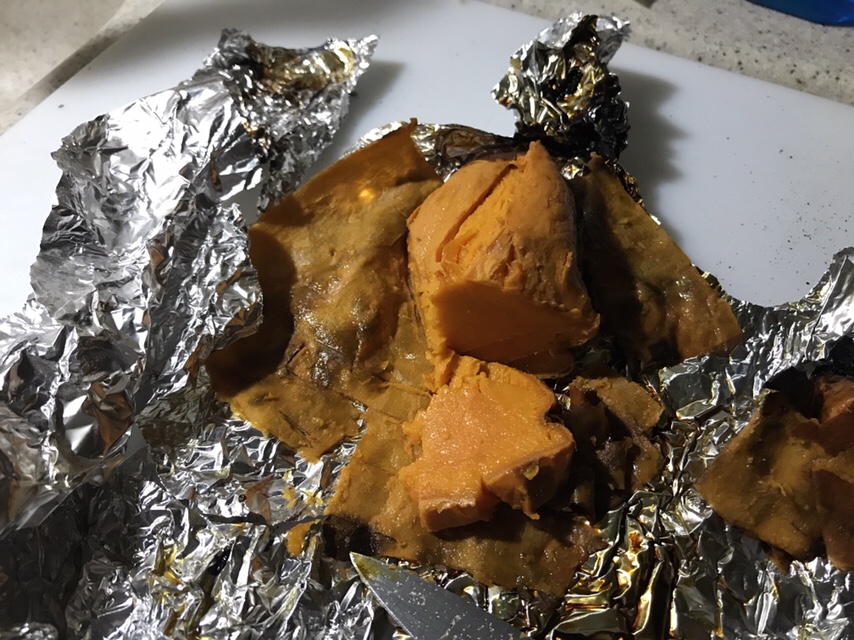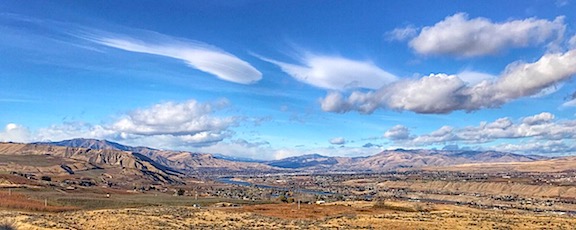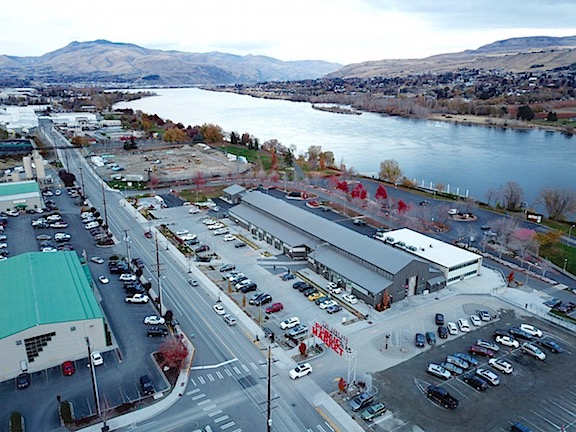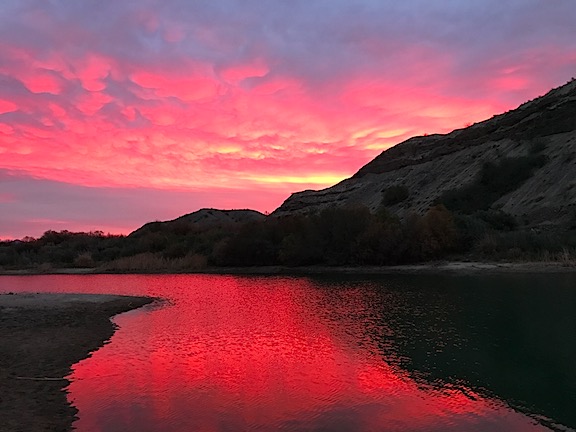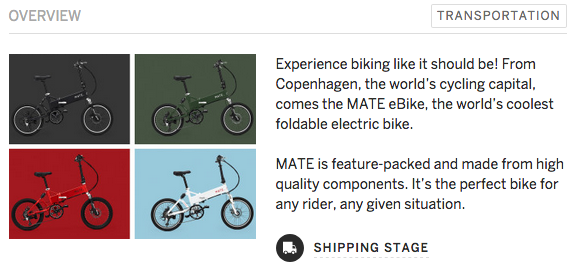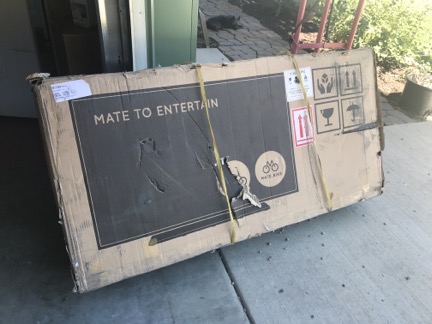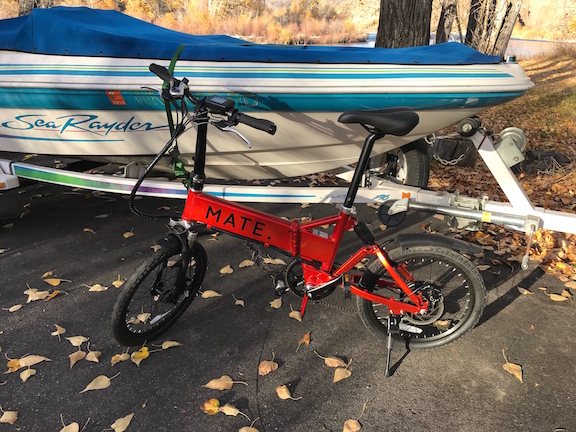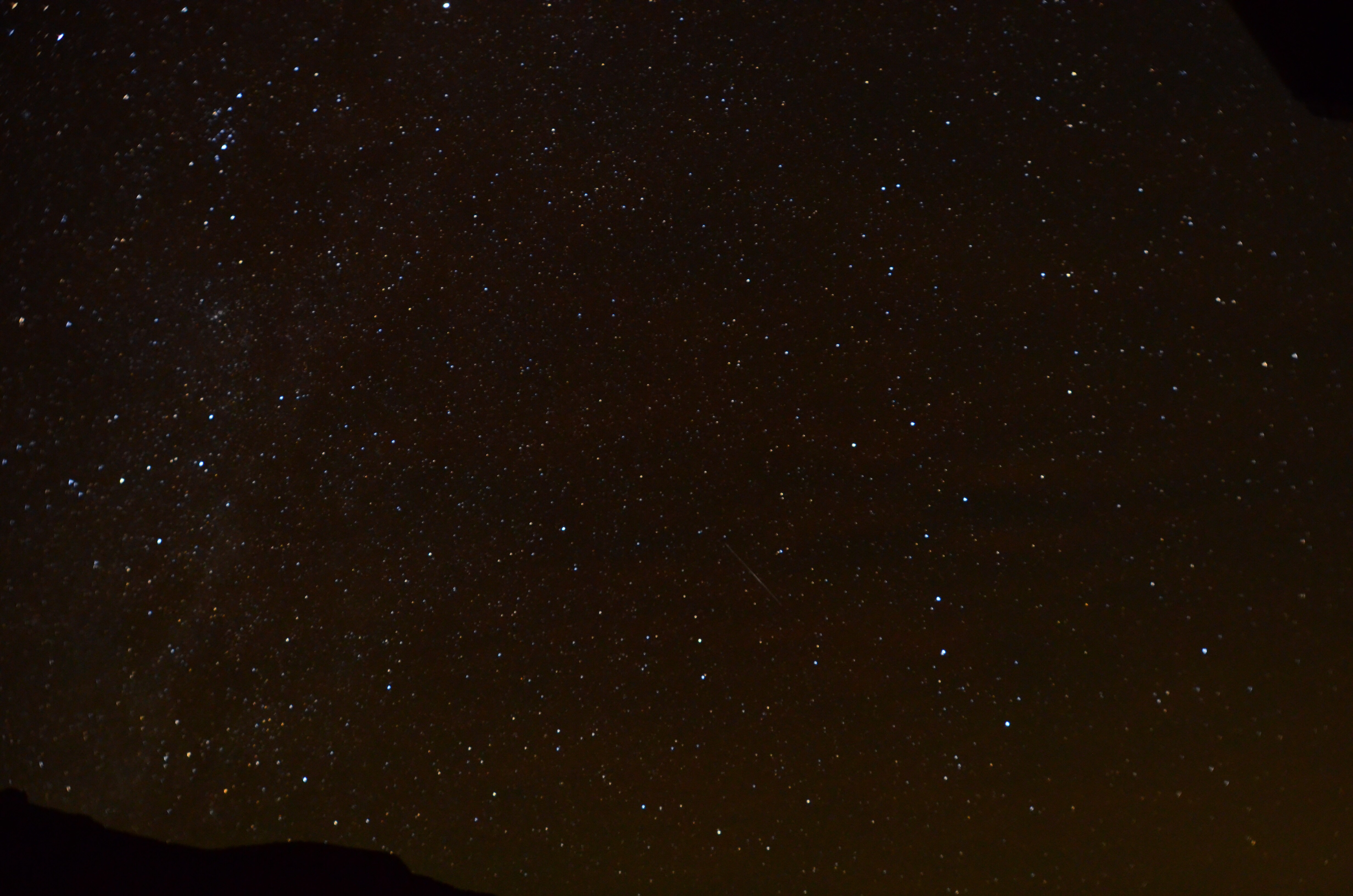It’s a nice bike, but I honestly can’t recommend it. Here’s why.
Way back in September 2016, I blogged about ordering a MATE foldable electric assist bicycle. It was offered through an Indiegogo crowd funding project. The makers wanted to raise $60,000. They wound up raising over $6.1 million.

The Overview of MATE’s Indiegogo campaign, which still appears on the Indiegogo site. From Copenhagen? Not exactly.
And that’s where everything went south.
The Delays
If you’ve come to read a review and don’t want to read my whining complaints about delays, damaged parts, and customer service issues, click
here to skip ahead. But if you want the
whole story from an actual funder, keep reading.
You see, they sold a lot of bikes — apparently enough to make them cheaper in China. So they sent the project there and spent months working with a Chinese manufacturer to get the bikes made. This added huge delays to the project. I was originally supposed to get my bike in September or October 2016, which would have been in time for my annual migration south. But instead of a bike, I got numerous progress report emails that apparently went out to everyone in my situation all over the world. Emails about new features available. Emails about working through design bugs. Emails about picking a color. Every few weeks, there would be another one, but none of them would specify a delivery date.
I went online when directed and set up an account on the Mate website. I picked a color (red). I changed my shipping address to where I’d be that winter. Later, when I left Arizona, I changed my address back to my home address. I reviewed my invoice to see if I had to pay any VAT tax (I didn’t) and tried to understand the confusing instructions about finalizing payment (I had paid in advance — over $1,000).
Months went by. When the emails came, I’d scan them to see if there was any delivery date. There wasn’t. These people wasted a lot of words on email messages that talked a lot about progress but delivered nothing.
I emailed them. I got canned responses about them being busy dealing with the amazing response to their incredible bike. I seldom got any response from a real person and, when I did, it didn’t answer my questions about when the bike would arrive.
After a while, I started to think the whole thing was a con. I contacted a friend of mine in New York who had bought one. He didn’t have any more information than I had.
More Problems with Shipping
Finally, in August 2017 — yes, eleven months later and at least nine months after the the original expected ship date — my bike was shipped. I got an email message about it and was hopeful. But if I’d read the message more closely, I would have anticipated the phone call I got from my friend in Arizona. The bike had been shipped to his house.
I went online. I looked at my record on their website. There was a billing address and a shipping address. My address in Washington appeared in both places. The Arizona address did not appear anywhere.
But now there was a 50+ pound box for me sitting in Arizona.
By some miracle I was able to get someone in MATE’s Customer Service who put me in touch with a woman in California who dealt with shipping. She had a Chinese accent. I suspect that she worked as a shipping agent for the Chinese manufacturer. She was very apologetic. After some back and forth by phone and email, she sent me a PDF for a UPS shipping label. I sent it to my friend. He printed it, stuck it on the box, and brought it to UPS for me.
“By the way,” he told me in a text, “the box is pretty beat up.”

My MATE finally arrived at my home in August, eleven months after paying for it.
The box was still beat up when it arrived and I made sure the UPS driver noted the damage. I took a photo of it before I opened it. The brown outer box fit snugly around a MATE inner box — the same kind of packaging Apple uses to ship computers. That inner box had some dings but nothing had fallen out.
A Damaged Part
The next day, I set about assembling the bike. It was mostly assembled; just a few pieces had to be put on. Putting on the front tire was Step 1. For some reason, however, I couldn’t get it on.
That’s when I realized that the front fork was bent. Badly. As if it had been crushed.
In all fairness, the packing job looked good. There was lots of foam and everything was secured with plastic wire ties. Everything fit tightly in the box; nothing had rattled around during shipment.
The damage to my fork, however, had likely been caused by a crushing weight. Whether it happened before the bike was packed or when it was put into the container or while it was moving across the ocean or when it was removed from the container or when FedEx or UPS shipped to to my friend or me is something I’ll never know. And frankly, I don’t care. The bike arrived damaged and was useless.
Knowing how bad MATE’s customer service was, I took the bike to two bike shops in Wenatchee to see if they could fix the fork. Biking is a big sport here and we have two excellent bike shops right in town. They both said the same thing: the fork was too badly bent and I needed a new one.
Crap.
I contacted my friend in New York. His bike had arrived damaged, too, but not as badly as mine. They’d been able to get the wheel on, but he admitted that it had been wobbly. I don’t think he was impressed.
Of course, there was no customer service phone number. The woman I’d worked with on the shipping issue could not help. I emailed MATE. About a week later, I got a message telling me to fill out a form on their website. I did.
Then I waited.
And waited.
I went online and filled out another form. I included photos of the damaged fork, as instructed. And I waited.
And waited.
I started sending emails to the same address I’d been communicating with. I got no response. None.
Meanwhile, I’d begun following @Mate_Bike on Twitter. When someone tweeted a photo of their new headquarters with a bunch of MATE bikes parked out front, I went ballistic. I’d helped pay for those headquarters and I had nothing to show for it other than a bike I couldn’t assemble. I tweeted a nasty response.
Any time @Mate_Bike retweeted someone’s praise for the bike, I’d reply that they were lucky to get one that worked. I was going to be the squeaky wheel, making sure that other folks knew about the crappy customer service I’d been getting.
And it worked. After a few tweets, I got a direct message (private tweet) from MATE. They were looking into my problem.
More time went by. I kept tweeting. I began using direct messages to nag them. I still can’t believe it was necessary to be such a whiney bitch.
But it was apparently the only thing that worked. I finally got a message saying the part had been shipped. I asked several times for a tracking number and after a week or so they sent me one.
And then, two full months after the bike arrived damaged, the new fork arrived.
Yes, I waited two months for them to replace a damaged part.
Assembly
I took the bike, which was back in its box, and the new fork to one of the bike shops in town and told them to assemble it for me. I was tired of screwing around with it. If there were problems with other parts — which was possible since I hadn’t been able to get past step 1 of the assembly instructions — I hoped they could deal with it.
They did. The fork arrived partially crushed but they were able to repair it well enough to put it on the bike. They got the bike assembled and even took it for a test ride, although they didn’t seem able to figure out how to get the motor running. (They thought that something needed to be in the USB port on the computer to turn it on; in reality, the port is provided to provide battery power to a mobile phone or other device.) They did, however, charge it up for me. So when I returned the next day, in pouring rain, I had a working bike.
Not a moment too soon. It was Friday. I was due to leave on my two-week autumn vacation south on Sunday. One purpose of the trip was to reposition my truck and camper in Arizona for the winter. If I didn’t get the bike on board my truck before I left, I wouldn’t have it with me for my big winter vacation.
Of course, it was raining like hell all day Friday so the only place I could test ride it was inside my garage. My garage is big, but not really big enough to test out a bike. Because I was kinda sorta hoping to leave on Saturday, I folded the bike up and packed it in the truck that morning.
First Test Ride
It wasn’t until Monday, at an autumn leaf strewn campground along the Salmon River in Idaho that I got a chance to finally test it out. The campground roads were paved and there was only one other camper around. I pulled it out of the truck, unfolded it, inserted the key in the lock, and turned it on. I turned on the computer display. I got on and started to pedal.
The electric assist gave me a little push between pedals. I dialed it up to help more and it did. I dialed it down to help less and it did. I used the “throttle” lever and let the electric motor do all the work.
Yes, the bike worked as advertised. And from what I’d seen so far, I liked it.

Here’s my MATE bike, parked after my first real ride in an Idaho campground. Does that look red to you?
Of course, I couldn’t seem to set the on board computer to display distance in miles instead of kilometers. I tweeted to MATE about that and was shocked to get a fast response with an image laying down step-by-step instructions for getting the job done. When I finally got around to trying them a few days later, they worked. (Unfortunately, when I tried them again to change the bike’s maximum speed, I couldn’t get back into the settings. I shut the bike down with the key and tried again in the morning; it worked. Go figure.)
The Big Test Ride
I put the bike through its paces on Sunday. I was winding up the traveling portion of my vacation and my last night on the road was in Natural lBridges National Monument in Utah. I found a campsite in their very pleasant campground but the parking area was so small I had to unhitch the boat I’d been towing for the past week and leave it parked on a gravel area near one of the restrooms just so I could back the camper in. Once I was parked and semi leveled, I wasn’t interested in moving the camper. So I decided to take a bike ride through the park. I knew there was a paved loop road with overlooks and figured that the bike should be able to handle it.
When my campground neighbor saw me getting on the bike with Penny in my backpack, he asked if I was doing the loop road. I told him I was.
“It’s nine miles long,” he told me. “And it has some pretty steep hills.”
I told him the bike had electric assist and should be able to do it. I sure hoped it would. The return trip was uphill and I had no desire to walk several miles rolling a bike with a dog on my back.
It didn’t take long to fully understand the power assist feature. It has six levels of assistance: 0 (none) to 5 (the most). It seemed to work at certain speeds (depending on the setting) when I pedaled down on the left pedal. So it was like a pulsing timed with my pedaling. Kind of annoying, frankly.
The model I bought also has an independent throttle that I can use whether I pedal or not. That’s limited to the speed you can set in the computer. (Which is why I wanted to try to change it; it was too slow.) It seems to have plenty of pep on level ground and gentle uphill climbs. But when roads get steeper — as the loop road did — the motor can’t seem to keep up. I soon learned that if I kept the bike in top gear (7) and pedaled while using the throttle, I could keep the speed above 15 miles per hour and not get fatigued with pedaling.
The trip computer crapped out on me once during the ride. It registered zero speed and the odometer didn’t click. I had to turn it off (thus turning off the electric motor) and then turn it back on to get it to work again. I have a feeling that the computer is going to be a problem in the future.
Going down hill with pedal power only is pretty fast. At one point, I had it up to 30 miles per hour, which probably wasn’t a good idea. But the bike is very solid and stable. It felt good, even at that speed. The brakes work well, although they do squeak a bit.

My MATE bike parked near one of the bridge overlooks at Natural Bridges National Monument. I’m thinking it’s orange.
I answered a lot of tourist questions about the bike when I stopped at viewpoints. My speed was almost enough to keep up with the people driving the road (where the speed limit was 15 mph) and making the same stops as me so I saw a lot of the people a few times. The bike obviously looks different and that starts conversations.
The battery seems to last well. It was fully charged a little over a week ago and I put nine miles on it Sunday after about two miles of screwing around with other short rides last week. When I finished on Sunday, four of the five battery level indicator bars were still solid. I can’t remember offhand how long MATE says the battery should last, but I’m sure I’ll get at least 25-30 miles out of a charge, even using the motor as much as I did on the loop road.
On ease of folding, I give it a 6 out of 10. The handlebars fold down and then the bike folds in half. There doesn’t seem to be any way to hold the two halves together; I use a bungee cord. Once the bike is folded, it’s awkward to roll. And it’s heavy — more than 50 pounds — so it isn’t very easy to lift in and out of the back seat area of my pickup truck, which is where it’s riding on this trip. I have learned to fold and unfold it right next to the truck door.
And the manual? Very nice looking waste of paper. It has very little useful information in it. I shouldn’t have to figure out how the bike works. The manual should explain it. And I shouldn’t have to use Twitter to get instructions for setting the computer with miles instead of kilometers. That should be in the manual, too.
Do I like it? Well, it meets my needs: it provides portable transportation that I can take with me in my truck, boat, or helicopter. The electric motor, if fully charged, will give me a good range on steep uphill climbs that I likely would not be able to pedal on my own. That means I don’t have to worry much about how far I might have to ride from, say, a landing zone to a local restaurant or motel.
But do I like it? I really don’t know yet. I don’t think I regret buying it, and that says a lot. But after talking to other people about electric bikes they’ve used, I’m not convinced this one was worth the wait and aggravation.
Customer Service is a Real Concern
Despite any level of satisfaction I have with the bike itself, customer service remains a serious concern.
What I want to know is where the customer service person who finally helped me with the fork issue and was so prompt with computer instructions was last year when I was waiting for my bike to arrive and two months ago when I first reported the fork problem. It’s almost as if it took the company fourteen months to set up a decent customer service department and even then, it only works through Twitter.
So no, even though I like the bike I honestly can’t recommend it to anyone.
Why would I? Until recently, I’ve had almost zero customer service. I can imagine recommending the bike to a friend and that friend having the same frustrating experiences I have had. And that friend coming to me and saying, “I thought you said this was a good bike?”
And don’t even get me started on the fact that when I dished out $1,000 for a bike thirteen months ago, I thought I was getting a bike made in Denmark. There’s no way in hell I would have bought the bike if I knew that manufacturing was being farmed out to China and I’d be waiting a year to get it.
This has been a big lesson for me about crowd-funding purchases. I realized that funding a project doesn’t mean you’ll get what you paid for timely. Or get any kind of acceptable customer service related to it. Or, in the case of Lily, an amphibious drone a friend of mine funded, it doesn’t mean that you’ll get what you paid for at all.
So even though I’ve now participated in three crowd funding projects through either Kickstarter or Indiegogo, I will not fund another one. Nothing is so amazing that I can’t wait until it hits the market to buy it from a real store with real support.
I just hope I don’t have any other issues with my MATE bike in the future.

